Three Firsts – Antarctic continent, Adelie penguin colony and colours galore in the Gullet
Day 8- 14th January, written by Lauren
Refreshed from a good night’s rest, the team enjoyed a quick breakfast and headed on deck for surveys. Despite the sunshine, it was quite cold outside. The wind barreled into the front of the boat and we made sure to bundle up. The time flew by regardless and several Crabeater seals and Wilson’s storm petrels later, it was time for lunch. After some downtime, we prepared for a landing, our first on the Antarctic mainland, travelling by zodiac to Red Rock Ridge to survey our first colony of penguins. This was a continental landing, and for some of our group it even meant stepping foot on their 7th continent.
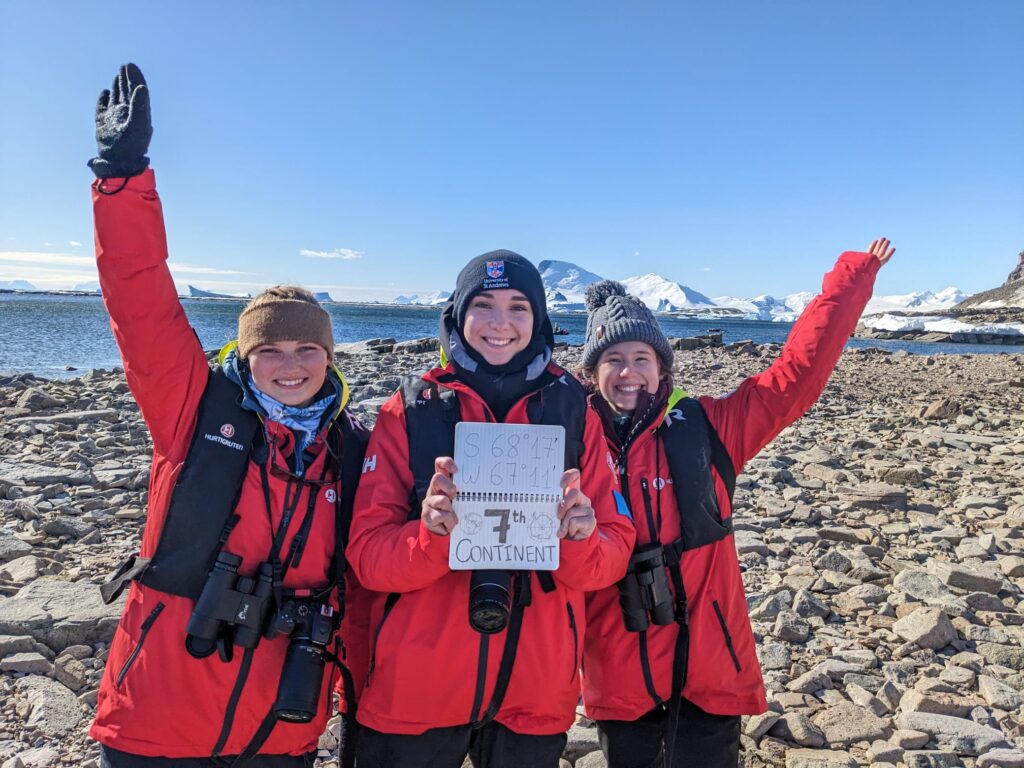
Red Rock Ridge is home to around 200 pairs of Adelie penguins. We paired up with each student team picking a nest to observe for 30 minutes, using an ethogram to record the behaviours of the adult penguins. It was fun to get a glimpse into their world, especially now that the Adelie penguins have well-developed chicks in their nests. The chicks were large grey-brown fluff balls, too big to be covered by the adult penguin, but too small to be off on their own quite yet. I found Adelie penguins to be very endearing little creatures and loved getting to see them walk around the colony and go about their business. After our visit to the penguins, we had to wait for the ship to move again to resume our surveys, so we had a small break and enjoyed yet another great dinner (which was, in my opinion, the best food of the trip so far).
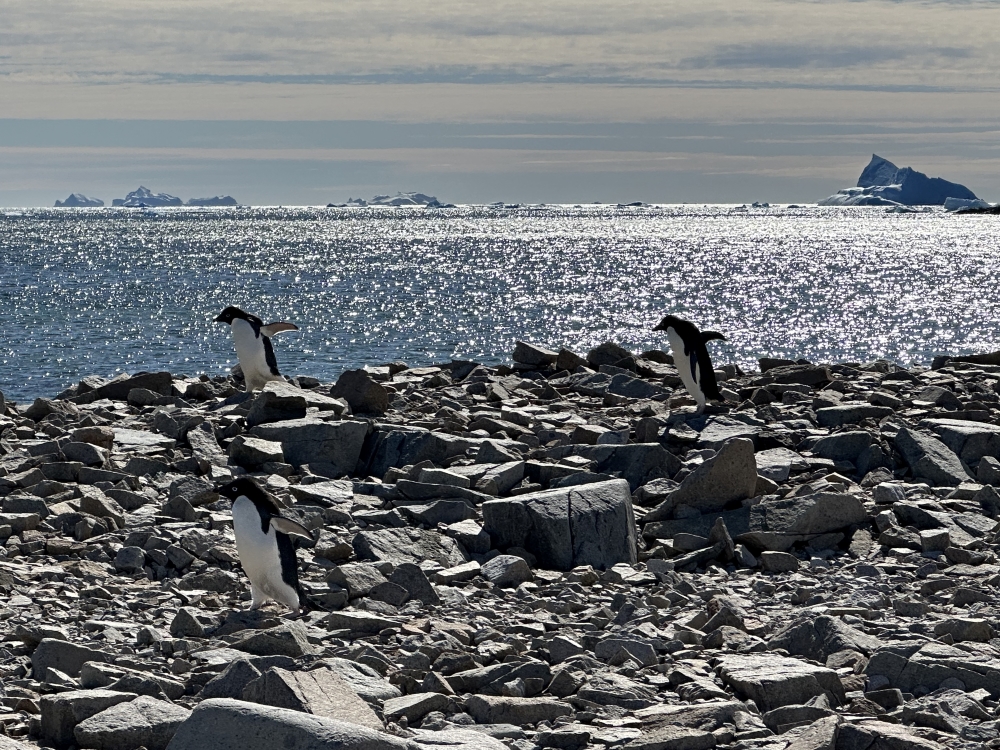
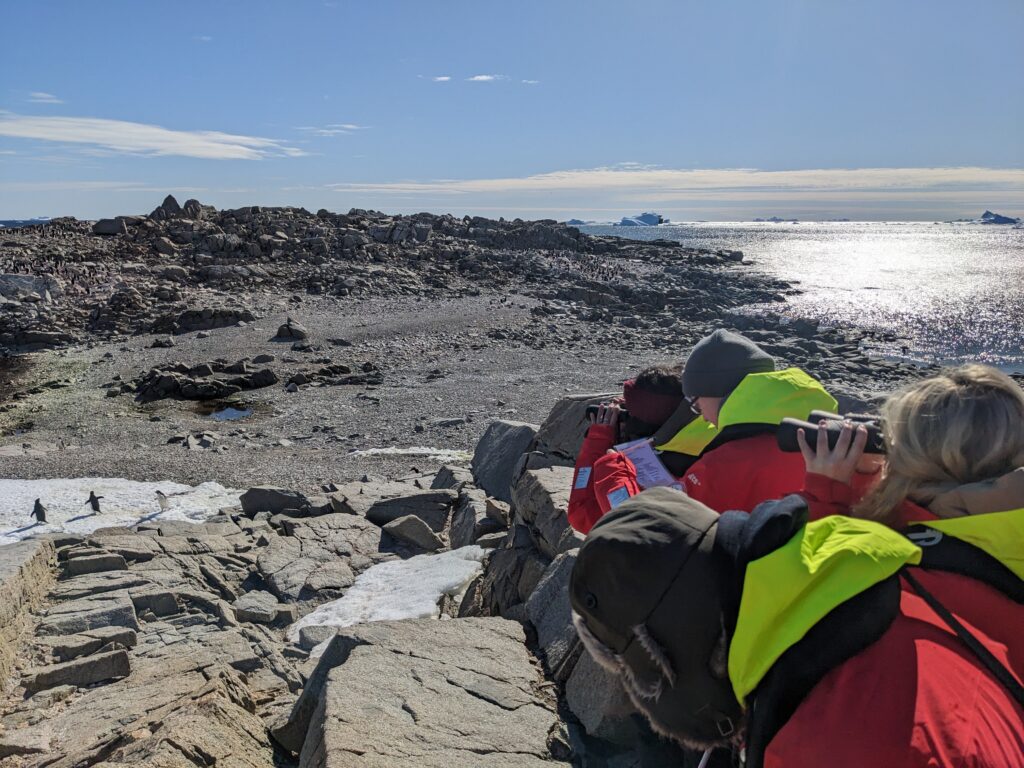
As evening approached, the ship prepared to sail through The Gullet, a narrow channel separating Adelaide Island from the Western Antarctic Peninsula. The ship originally attempted to sail southbound through this passage earlier in our journey, but found it blocked by ice. This time, the ship planned to sail northbound through the passage, entering The Gullet around 23:00. We were eager to maintain our surveys and see all the wildlife. The narrow channel provided excellent cover from the wind, leading to still, mirror-like waters. We were lucky to record humpback whales as we approached and large numbers of Crabeater seals on the ice floes and sea birds including fulmars, Antarctic cormorants, south polar skuas, Wilson’s storm petrel, and a snow petrel, but unfortunately the much-desired orcas eluded us.
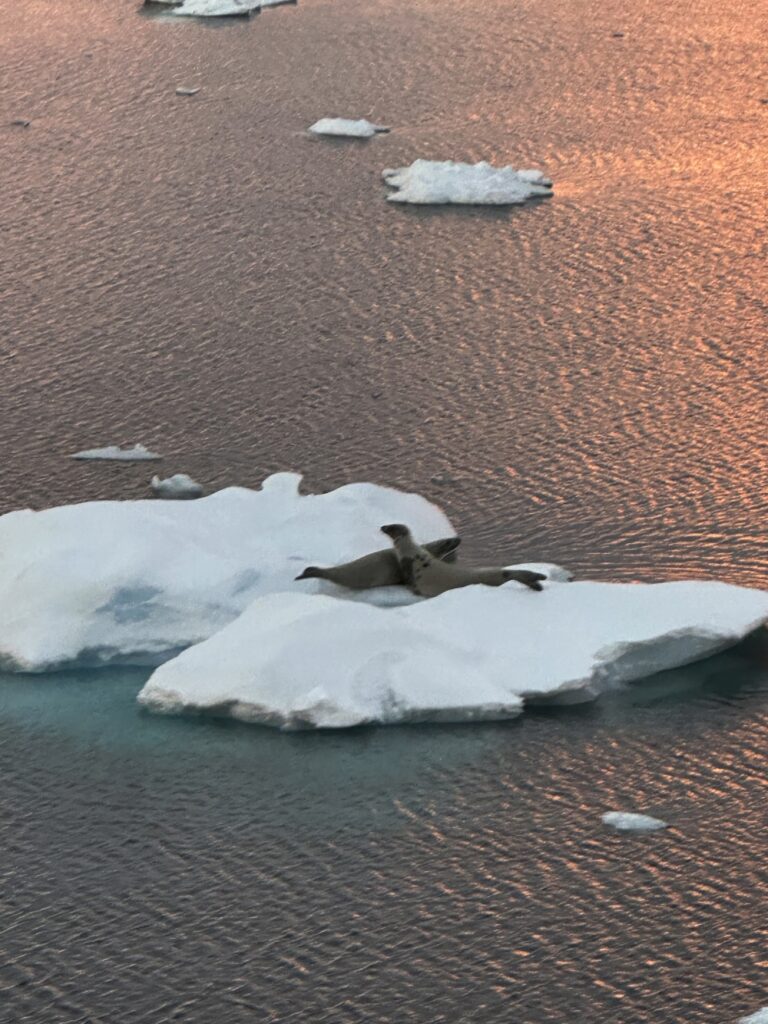
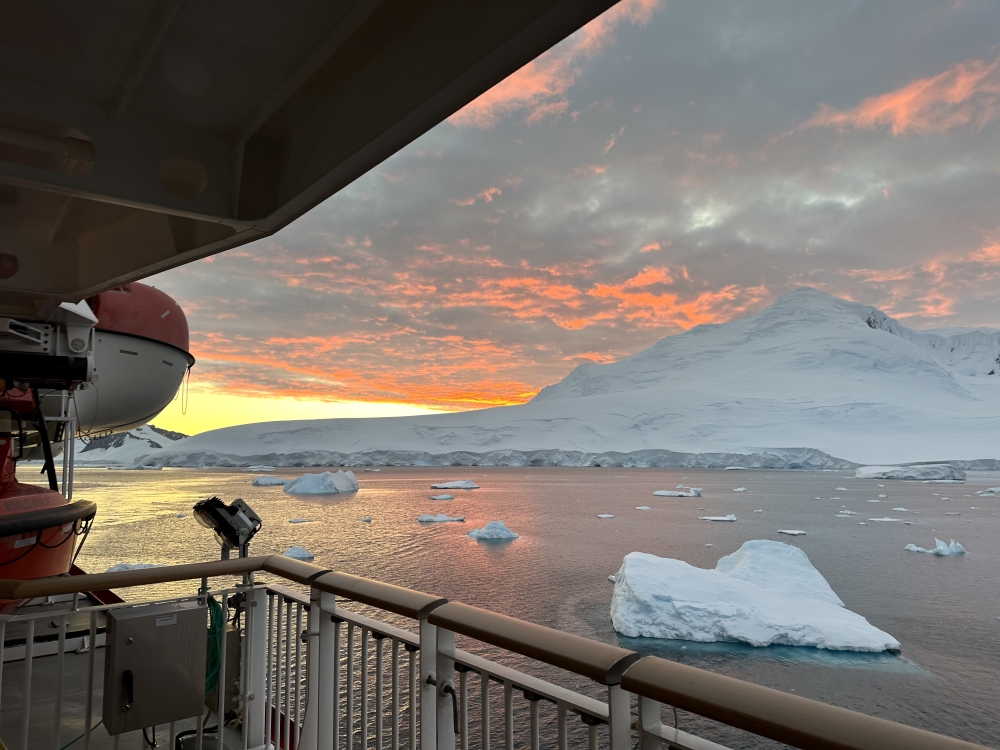
Just as impressive (and perhaps even more so) as the wildlife was the scenery. Because of our position south the Antarctic Circle, the sun never truly sets, dipping close to the horizon before ascending again. As the time crept toward midnight, the low sun lit up the snow-capped mountain tops, illuminating them in gorgeous shades of orange and pink. The stunning mountain scenery was mirrored on the calm water, turning the whole passage into something out of a dream. Most of us stayed up to see the midnight sun as well as the ‘sunrise‘ that followed in the hours afterwards, soaking in the otherworldly views. Although we wanted the experience to last forever, eventually it was bedtime and we reluctantly retreated to our cabins to get some sleep in preparation for another mindboggling day in Antarctica.
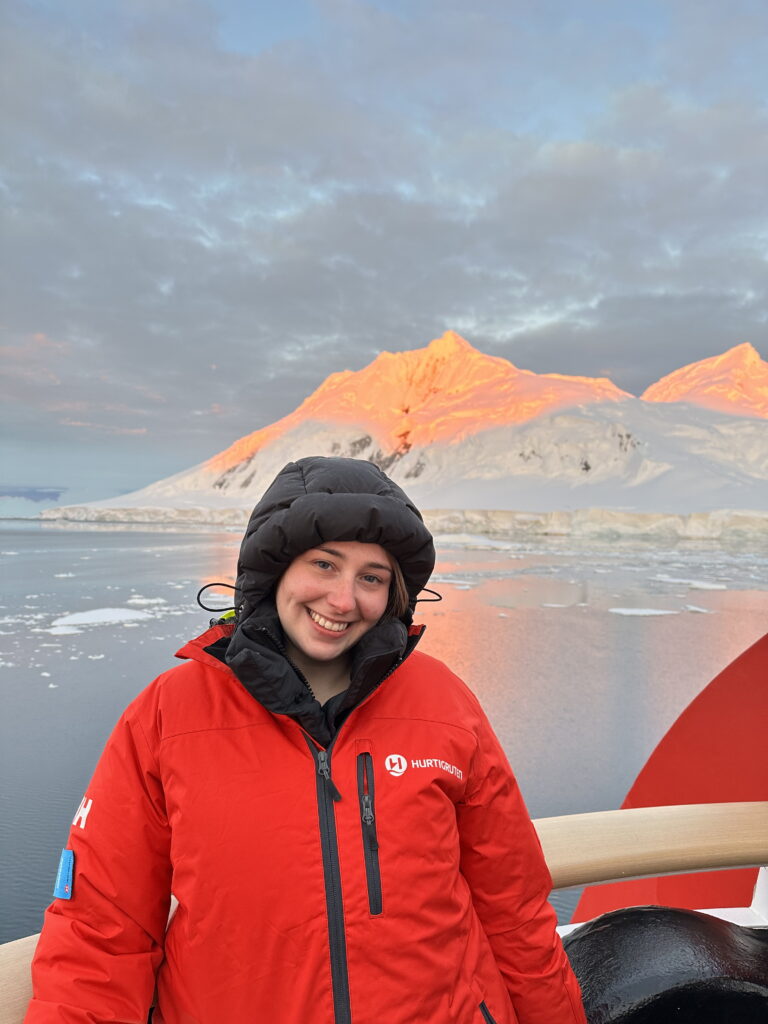

Loving these updates and seeing some familiar faces putting what they’ve leaned into practice and observing the magnificent natural world. It all sound and looks INCREDIBLE! Thanks for the updates all. Have fun! Charmaine